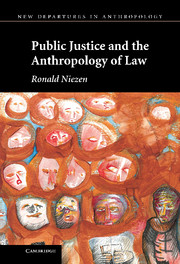Four - The invention of indigenous peoples
Published online by Cambridge University Press: 05 June 2012
Summary
Introduction
In this chapter I present evidence that conceptual diplomacy, the (re)configuration and naturalization of categories of belonging in international law, operates at such high levels of abstraction that it has, like many other things, gone global. In particular I want to discuss a long-term diplomatic initiative by the United Nations – the elaboration of the rights of indigenous peoples – to illustrate a pathway toward identity formation and public persuasion that does not straightforwardly give names to established social entities, but begins with the creation or re-conceptualization of a category of belonging, which only through public exposure and approval can then acquire leaderships, memberships, traditions, loyalties and rights claims. Conceptual diplomacy is applied not only in specific situations of conflict but in more nebulous categories of belonging that transcend state boundaries. It is occasionally invoked in response to abstract circumstances of conflict, disconnected from any particular situation of crisis. It can be based on intangibles, while remaining in essence ameliorative and preventive, aimed toward improving conditions of peoples’ lives and preventing violence by cultivating cultural understanding and appreciation of human difference to a global audience.
The agendas of international institutions do not reveal or reflect cognizance of the history of the terms they use or the cultural innovations introduced by conceptual-diplomatic efforts. An overview of past use of the key concept “indigenous peoples,” followed by an outline of current popular usage, should make it clear that this term has been reformulated to become an institutionally managed, publicly promoted, state-transcending category of identity, taking initial form through legal/institutional imperatives and processes and then indirectly influencing the conditions of peoples’ lives through the cultivation of ideas.
- Type
- Chapter
- Information
- Public Justice and the Anthropology of Law , pp. 105 - 136Publisher: Cambridge University PressPrint publication year: 2010

